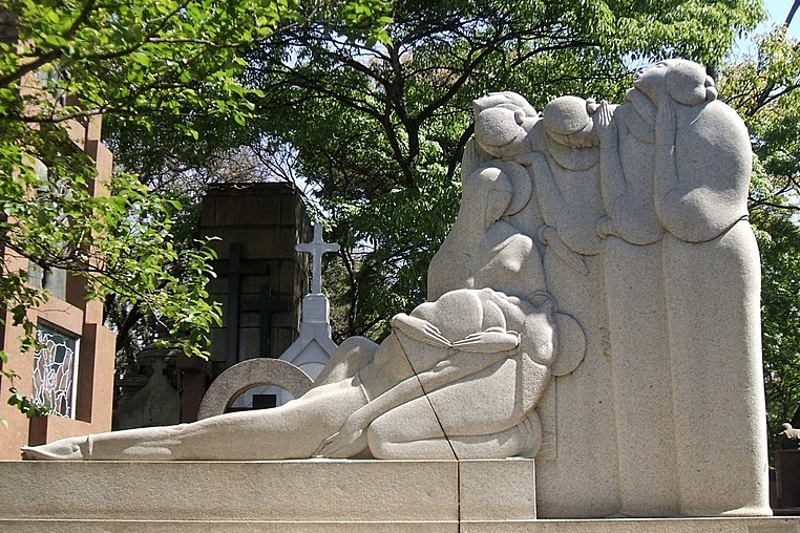On an appropriately gloomy day, myself, the birds, and cemetery workers wandered the artistic wonder that is the Cemitério da Consolação. There’s a sign at the entrance that warns people away because of the possibility of contracting dengue fever. However, it’s too cold for mosquitoes so I continue without worry.
Speaking of disease, in the 1800s coffee barons became a newly formed bourgeoisie in Sao Paulo. It was during this time that the city grew exponentially and found itself in need of a local cemetery.
It was a common and preferred practice to bury dead in the consecrated ground in and around churches instead of in a local cemetery. However, as the number of deceased grew, so did the resulting byproduct of human decomposition. This accelerated the spread of disease and the Cemitério da Consolação was created in 1858 in an attempt to curb this.
The Cemitério da Consolação is considered one of the most beautifully artistic of graveyards in Brazil — and is a popular destination for art walks.
It seems that if the bourgeoisie were no longer able to bury their dead in churches, then they would do so in the cemetery with great gusto and artistic class. As the need to one-up each other in death grew, famous artists like Rodolfo Bernardelli, Victor Brecheret, Bruno Giorgi and Antonio Celso de Menezes were hired to create elaborate brass and marble monuments.
It’s easy to see how certain graveyards could incite imagination and give people what they need to create stories of vampires and creatures that roam after dark.
On the surface of Cemitério da Consolação are beautiful, artistic monuments to families; however, under these monuments are (in some cases) many levels of ancestral remains. As I wandered I found open underground catacombs and surface tombs were exposed for all to see. There were also times where I was reluctant to Blink.
When La Niña saw the grave below, she said, “Oh no, someone broke out!”
